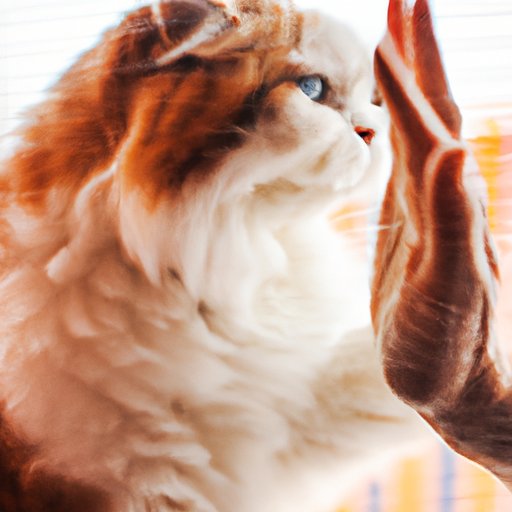
Introduction
Wild cats are known to be solitary creatures, but they also have a social hierarchy. They have a language they use to communicate with each other – with everything from vocalizations to body language. Domestic cats, on the other hand, are social creatures that crave attention and can live in groups. When bringing multiple cats into one home, it’s important to understand their social behavior to prevent aggressive conflicts.
Communication Techniques
Understanding your cat’s body language is important when managing their interactions with other cats. Cats communicate through posture, eye contact, tail movement, and more. For example, a flattened posture can be a sign of anxiety or fear, while a relaxed posture indicates contentness and friendliness. By paying close attention to their behavior, humans can identify their cat’s emotions and intervene before things get out of hand.
Aside from body language, cats also use vocalizations to communicate. Hissing, growling, and howling indicate aggression, while purring and meowing are signs of contentment. By recognizing these vocalizations, humans can also anticipate when cats might be feeling tense and intervene before they lash out.
Positive Reinforcements
One way humans can build positive relationships between their cats is through positive reinforcement techniques. For example, giving treats and playing with toys is a great way to create positive bonding experiences. Encourage your cats to play and interact with each other, and reward them with treats when they are friendly and cooperative with each other.
Cats are also social creatures that benefit from attention from their humans. Spending time with each cat individually and also together can help build relationships and create positive experiences. Scratching posts and cat trees can also help reduce conflicts by providing territories for the cats to claim, which can reduce territorial aggression.
Separation Techniques
When tensions are high between cats, it’s important to give them space from each other. This can be done by separating them in different rooms or areas of the house. By keeping them apart, they can calm down and regain their composure. They can also get used to each other’s scents and presence from a distance, which can lead to more positive interactions later on.
Another way to reduce territorial tension is to provide multiple resources, such as food and water bowls, litter boxes, and sleeping areas. This can reduce resource guarding and competition, which can lead to aggressive conflicts.
Professional Help
If things are still not working between your cats, it may be time to seek professional help. Veterinarians and animal behaviorists can help assess the situation and offer solutions that are tailored to your specific cats and situation. They can offer advice on techniques, medications, and other strategies that can help make your home a more harmonious environment.
Conclusion
Having multiple cats can be a fun and rewarding experience, but it’s important to understand their social behavior to prevent conflicts. Communication, positive reinforcements, separation techniques, and professional help are all strategies that can help create a harmonious home. Remember to pay attention to your cats’ behavior and intervene before conflicts escalate.




